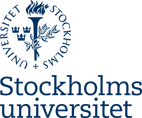
Petra Dotlacilova holds a BA degree in Italian Philology (Charles University) as well as a Master’s degree and PhD (2016) in Dance Studies from the Academy of Performing Arts in Prague. Between 2015 and 2017, she collaborated in the project “Ritual Design for the Ballet Stage (1650–1760)” at Leipzig University. Currently she is pursuing doctoral research at Stockholm University, focusing on the costume designs of Louis-René Boquet in eighteenth-century France. In addition, she participates in the research project “Performing Premodernity.”
Abstract
Médée et Jason was the first title that French choreographer Jean-Georges Noverre choose to transform into a tragic ballet en action in 1763 in Stuttgart, after experimenting with the dramatic form of dance for several years. Despite or maybe because of its unusually bloody plot (it was in fact one of the first ballets where one or more characters died on stage), the ballet was re-staged several times in different places including court scene at Choisy, Vienna, Milan and Paris. For most of these performances, the costumes were created by the same artist, Paris-based Louis-René Boquet (1717-1814), whom Noverre claimed the most skilled and advanced costume designer of his time.
Sketches, engravings and descriptions in the inventories from various archives around Europe recorded the costumes of the balletic Medea, despite the actual garments have vanished. Through the preserved visual and textual sources, the complex nature of the theatrical costume will be examined. What was its dramatic and symbolic potential? How it related to contemporary (and past) fashion and art, and to the ongoing costume reform? Both aesthetic and social requirements are layered in the visual appearance of the ballet, reflecting the turbulent period in which it was created.



